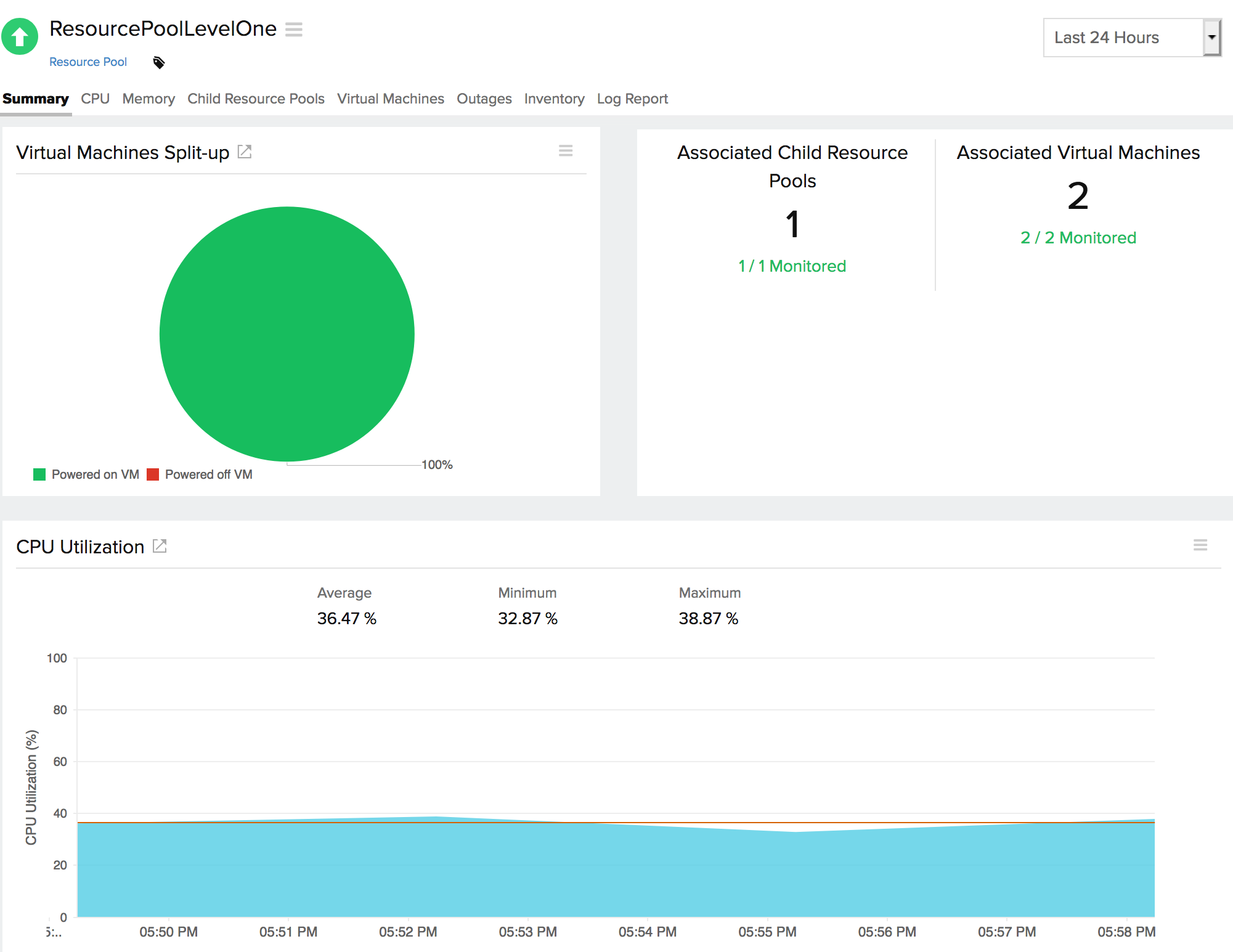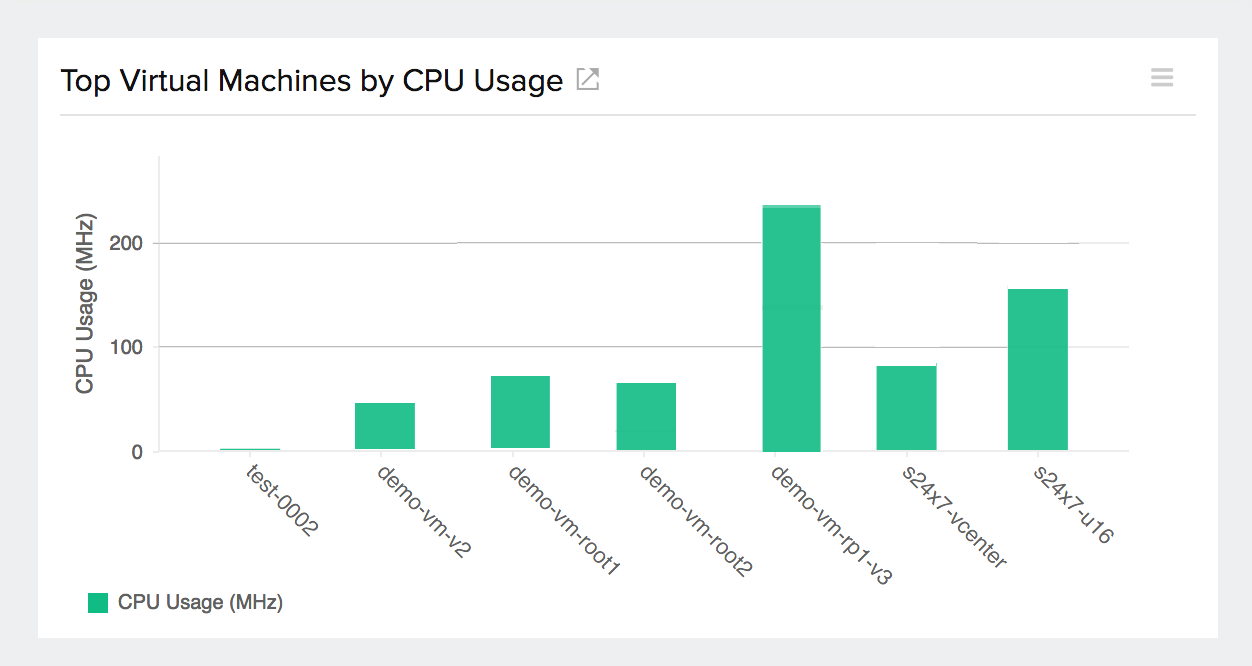Performance Metrics of VMware Resource Pool Monitors
Resource pools are used for flexible management of CPU and memory resources of an ESXi host or a cluster. A resource pool can contain inner resource pools, virtual machines, or both, which can be grouped into hierarchies to partition available CPU and memory resources.
Each resource pool has shares, limits, and reservations for the CPU (in MHz) and memory resources (in MB). Monitor them and gain complete visibility into the CPU and memory usage metrics of the resources under your resource pools. With the resource pool tree state and VM state displayed, you get a quick overview of the performance of your resource pools and their impact on the associated virtual machines (VMs).
In this doc, we'll cover:
- Basic resource pool monitoring metrics
- Virtual Machine metrics in the resource pool
- Child resource pool metrics
Basic resource pool monitoring metrics
The resource pool summary tab in the monitor dashboard drills down into basic parameters to give you a quick overview of the resource pool's state and performance.
| Attribute | Description |
| Resource pool tree state | Green (undercommitted): There is enough capacity to satisfy all the resources reserved by the children. Red (inconsistent): One or more nodes in the tree have children (a VM, a child resource pool, or both) whose reservations are greater than what the node is configured to support. Yellow (overcommitted): The root resource pool does not have the capacity to meet the reservations of its children. |
| Virtual machines | Measures the total number of virtual machines in the resource pool. |
| Inner resource pools | Measures the total number of inner resource pools in the resource pool. |
| Powered on VMs | Gives the number of VMs that are powered on in the resource pool. |
| Powered off VMs | Gives the number of VMs that are powered off in the resource pool. |
| CPU utilization (%) | The total CPU consumed in percentage. |
| Memory utilization (%) | The total memory usage in percentage.. |
| Overall CPU usage (MHz) | Measures the overall CPU usage in the resource pool. |
| Reserved CPU usage (MHz) | Measures the guaranteed minimum allocation of CPU in the resource pool. |
| Unreserved CPU (MHz) | Measures the unreserved CPU capacity in the resource pool. |
| Maximum CPU usage (MHz) | Measures the maximum amount of CPU used in the resource pool. |
| Overall memory usage (MB) | Measures the overall memory consumed in the resource pool. |
| Maximum memory usage (MB) | Measures the maximum amount of memory used in the resource pool. |
| Reserved memory used (MB) | Measures the memory reservation in the resource pool. |
| Unreserved memory available (MB) | Measures the unreserved memory in the resource pool. |

Virtual machine metrics in the resource pool
| Attribute | Description |
| CPU demand (MHz) | Measures the amount of CPU capacity the VM can consume. |
| CPU usage (MHz) | Measures the overall CPU usage by the VM. |
| Guest memory usage (MB) | Measures the total memory used by the guest OS in the VM. |
| Host memory usage (MB) | Measures the amount of host memory used by the VM. |
| Ballooned memory (MB) | The memory reclaimed by ballooning, i.e., the reclaimed physical memory as the host is low on memory. |
| Swapped memory (MB) | Amount of memory that is swapped. |

Child resource pool metrics
| Attribute | Description |
| Overall CPU usage (MHz) | Measures the overall CPU usage in the child resource pool. |
| Maximum CPU usage (MHz) | Measures the maximum amount of CPU used in the child resource pool. |
| Overall memory usage (MB) | Measures the overall memory consumed in the child resource pool. |
| Maximum CPU usage (MB) | Measures the maximum amount of memory consumed in the resource pool. |
